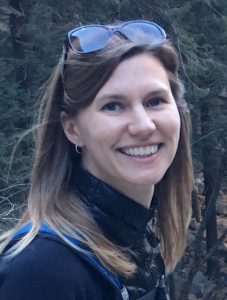Anne Dekas, Stanford University
Moss Landing Marine Labs Seminar Series - February 22nd, 2018
Hosted by the Biological Oceanography Lab
MLML Seminar Room, 4pm
Open to the public
 Anne Dekas is an Assistant Professor at Stanford University in the Earth System Science Department studying the microbiology and biogeochemistry of the deep sea. She is broadly interested in how microbial life affects the chemistry and climate of the planet, today and throughout time. Her research combines tools from molecular biology and isotope geochemistry to identify and quantify microbial metabolic capabilities, activity, and interactions, with a focus on understanding uncultured microorganisms in deep-sea water and sediment. Before joining the faculty at Stanford, she was a Lawrence Postdoctoral Fellow at Lawrence Livermore National Laboratory, where she investigated the carbon metabolic flexibility of pelagic marine archaea. She received a Ph.D. in Geobiology from the California Institute of Technology, where she studied nitrogen fixation, methane oxidation and sulfate reduction at deep-sea methane seeps. She received an A.B. in Earth and Planetary Sciences from Harvard University. Originally interested in space sciences, Dekas performed research at three NASA centers (Jet Propulsion Laboratory, Ames Research Center, and Goddard Space Flight Center ) before beginning her Ph.D., and she continues to be interested in the survival strategies of life in extreme environments.
Anne Dekas is an Assistant Professor at Stanford University in the Earth System Science Department studying the microbiology and biogeochemistry of the deep sea. She is broadly interested in how microbial life affects the chemistry and climate of the planet, today and throughout time. Her research combines tools from molecular biology and isotope geochemistry to identify and quantify microbial metabolic capabilities, activity, and interactions, with a focus on understanding uncultured microorganisms in deep-sea water and sediment. Before joining the faculty at Stanford, she was a Lawrence Postdoctoral Fellow at Lawrence Livermore National Laboratory, where she investigated the carbon metabolic flexibility of pelagic marine archaea. She received a Ph.D. in Geobiology from the California Institute of Technology, where she studied nitrogen fixation, methane oxidation and sulfate reduction at deep-sea methane seeps. She received an A.B. in Earth and Planetary Sciences from Harvard University. Originally interested in space sciences, Dekas performed research at three NASA centers (Jet Propulsion Laboratory, Ames Research Center, and Goddard Space Flight Center ) before beginning her Ph.D., and she continues to be interested in the survival strategies of life in extreme environments.
A single-cell view of microbial activity in the deep sea
The deep sea is one of the largest habitats for microbial life on the planet: it covers nearly two thirds of our Earth’s surface and harbors approximately 70% of total marine microorganisms. The activity of microorganisms in the deep sea plays an essential role in biogeochemical cycling, including the production and consumption of greenhouse gases (e.g., CH4, CO2 and N2O), thereby affecting climate. Our knowledge of the diversity and activity of the microorganisms in the environment, including the deep sea, has expanded in recent years with the development of next generation sequencing (e.g., “-omics” methodologies). However, our understanding of trends in microbial activity as a function of phylotype and physicochemical parameters is still lacking, and particularly so in the deep ocean. Closing this gap in our knowledge will increase our understanding of greenhouse gas cycling in the marine environment, and will better equip us to predict the activity of microorganisms in a changing climate. To this end, my group is currently studying: (1) organic substrate utilization by pelagic marine Thaumarchaeota, (2) nitrogen fixation by anaerobic bacteria and archaea in marine sediments, and (3) methane oxidation by syntrophic archaea at methane seeps. In this presentation I will touch on each of these areas of exploration, as well as our recent methodological advances in the use of nanoscale secondary ion mass spectrometry (nanoSIMS) to quantify anabolic activity in uncultured microorganisms on the single-cell level.

